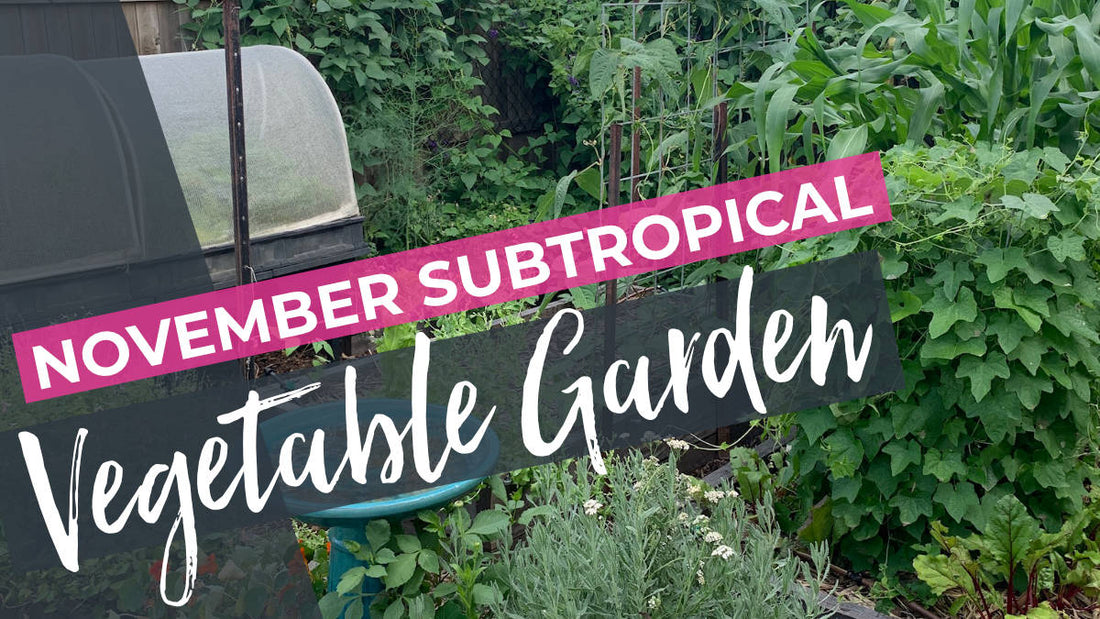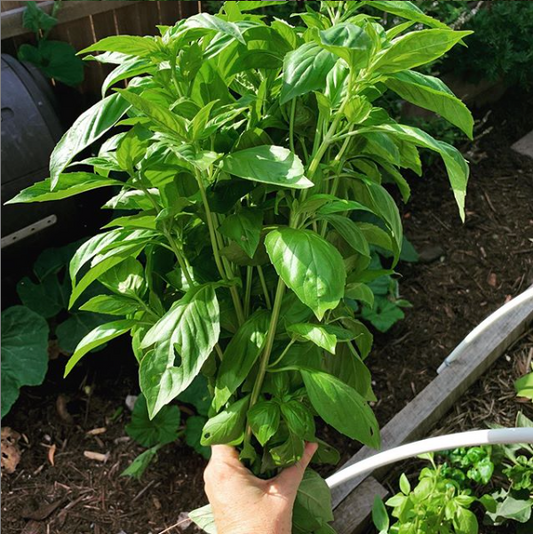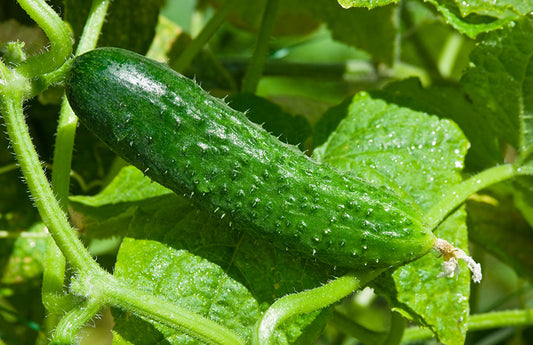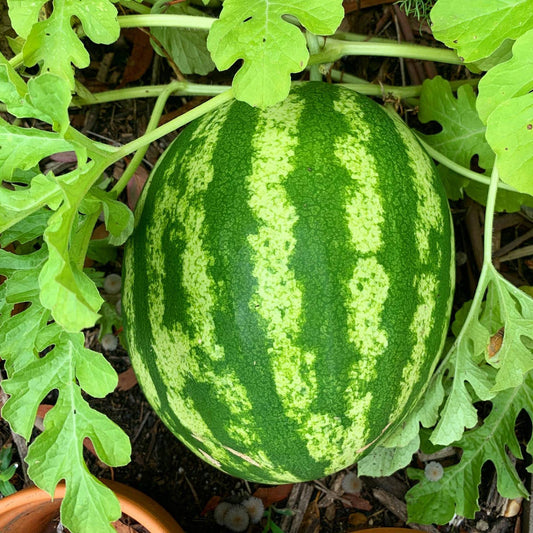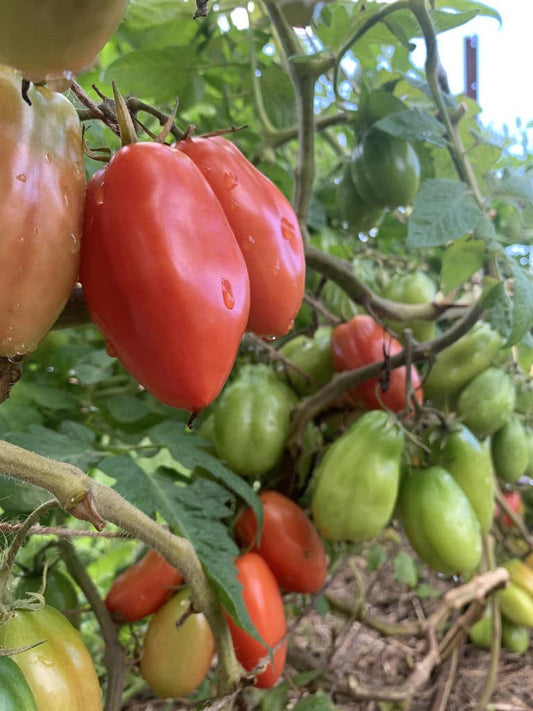As November unfolds in subtropical Australia, your vegetable garden takes centre stage with its vibrant colours and abundant growth. The weather is warmer, and there's an aura of excitement in the air as your garden teems with potential, or looming disaster, however you frame your summer garden here in the subtropics. In this blog, we'll delve into the ins and outs of vegetable gardening in subtropical Australia during the month of November. Discover what to plant, how to care for your crops, and make the most of this exciting season for your edible garden.
Vegetable Selection
November is a time of warmth and sunshine, making it ideal for planting a wide range of vegetables that thrive in subtropical Australia. Here's a list of vegetables you can consider for your garden:
Tomatoes
November is the perfect time to plant tomato seedlings or transplants in your garden as they will grow fast. The downside is keeping diseases away when the humidity picks up. Always opt for varieties that are more resilient on that front, our picks are the standard Roma, Burnley Gem or Tommy Toe. Save your fancy heirloom varieties for planting late summer with Autumn harvests. Personally we opt for cherry tomatoes this time of year as they are quicker to produce, less likely to split with a huge deluge of rain and generally have less issues, we pick just as they start to 'blush' and allow to ripen inside to help avoid fruit fly stings.
Capsicums and Chilies
Capsicums and chilis are excellent choices for subtropical climates. Plant them in well-drained soil with plenty of sunlight. They'll flourish and provide you with a bountiful harvest.
Cucumbers
Cucumbers are high-yielding and quick-growing vegetables. Plant them along trellises or fences to save space and encourage healthy vine growth. Keep the soil consistently moist for optimal results.
Zucchini and Squash
Zucchini and squash plants thrive in the warm weather of subtropical Australia. These versatile vegetables are perfect for adding to your favourite recipes, from stir-fries to fritters. A common problem is fruit not fully forming, if you’re having issues with that check out our round up of possible causes here.
Corn
For that classic taste of summer, consider planting sweet corn in your garden. Plant them in blocks rather than single rows for effective pollination. We always plant a minimum of 16 and only one variety at a time. If you’re after something different try the mini blue popping corn.
You can download our seed sowing chart here or check out our seed range of what to plant in November here.
Preparation and Maintenance
In November, garden maintenance is crucial for a successful harvest. Here's what you need to do:
Watering
As the weather warms up, your vegetable garden will need more frequent watering. It's essential to keep the soil consistently moist to support the rapid growth of your crops. Consider these watering tips:
Deep watering: Water deeply and less frequently to encourage strong root development. Drip irrigation or soaker hoses can help deliver water directly to the root zone.
Mulch: Apply mulch around your plants to conserve moisture, regulate soil temperature, and suppress weeds.
Water late in the afternoon or early in the morning: Watering not at the peak of the day will help minimise water loss due to evaporation.
Fertilising
Proper nutrition is essential for your vegetable garden's success. In November, your crops will benefit from regular feeding. Consider these fertilising practices:
Organic fertilisers: Use organic options like compost, well-rotted manure, or organic granular fertilisers. These feed your plants while improving soil health.
Regular feeding: Provide nutrients to your vegetables every 4-6 weeks to support their growth and fruit production (slow release organic fertiliser works well). We do weekly feeds of Seaweed Saver to help boost things along as well.
Avoid over-fertilising: Follow the recommended application rates to prevent nutrient imbalances or damage to your plants.
Pest and Disease Control
In a warm, subtropical climate, pests and diseases can thrive.
Pests you’re likely to see during November include:
Aphids: These small, soft-bodied insects can be found on a wide range of plants, particularly new growth. They feed on plant sap and can distort leaves and transmit plant viruses.
Whiteflies: Whiteflies are tiny, white insects that feed on the undersides of leaves. They can cause leaf yellowing and can transmit plant diseases.
Scale Insects: Scale insects are often found on stems and leaves, appearing as waxy or shell-like coverings. They feed on plant fluids and can weaken plants over time.
Mealybugs: Mealybugs are small, soft-bodied insects covered in a waxy, white substance. They feed on plant sap and can weaken plants and reduce their vitality.
Caterpillars: Various caterpillar species, such as cabbage loopers and armyworms, can feed on the foliage of many vegetable and ornamental plants.
Snails and Slugs: These mollusks can be destructive in the garden, munching on leaves and fruit. They are particularly active during damp conditions and love hiding under moist mulch.
Spider Mites: These tiny arachnids can damage plants by piercing cells to feed on plant juices. They often leave fine webs on the undersides of leaves.
Fruit Flies: Fruit flies can infest ripening fruit, causing them to rot from the inside. They are especially problematic for fruit trees and can affect crops like tomatoes, capsicums and the Cucumber fly can affect your cucurbits. Find how we manage QLD fruit fly here.
Ants: While not plant pests themselves, ants can protect and "farm" other pests, such as aphids and scale insects, by providing them with protection from predators. Ants in your garden beds are also a good indication that your soil has become too dry and compacted.
Grasshoppers: These voracious eaters can consume large quantities of plant material, particularly in areas with grass and low-growing plants.
Leafhoppers: Leafhoppers are small, wedge-shaped insects that feed on plant sap. Some species can transmit plant diseases.
Cutworms: Cutworms are moth larvae that cut through the stems of young plants near the soil level, causing them to wilt and die.
Sap-Sucking Bugs: Various bugs, such as stink bugs, can damage plants by piercing and sucking plant fluids. They also can spread disease.
Regular monitoring and proactive measures are essential to keep your crops healthy:
Companion planting: Strategically planting herbs and flowers that deter pests, such as marigolds, basil, and nasturtiums, can help protect your vegetables.
Beneficial insects: Attract and protect beneficial insects like ladybugs, lacewings, and parasitic wasps that can help control pests naturally.
Inspect your plants: Regularly check your vegetables for any signs of pests or diseases. Early detection allows for more effective management.
Organic solutions: Use organic pest control methods such as eco oil to manage minor infestations without harming beneficial insects or your crops.
If you do need more help identifying or troubleshooting issues with pests come join us in Dirt Lovers.
Succession Planting
To maintain a continuous harvest, consider succession planting. This involves planting new crops as soon as existing ones are harvested. Here's how to make the most of succession planting:
Plan your garden layout: Organise your garden with enough space for the next set of crops. This could mean planting in rows, blocks, or containers.
Choose suitable vegetables: Select vegetables that have shorter growth cycles or are suitable for our climate.
Monitor planting dates: Keep track of when each crop was planted and the expected harvest date. This ensures a seamless transition between crops. Dirt Lovers can get access to our printable garden planner here. If you want a run down of how we succession our garden so we're always harvesting you can check it out here.
If you need help with coming up with a plan you can grab my layout plans as a member of Dirt Lovers.
November is a time of abundance and growth in your vegetable garden in subtropical Australia. With the warmth of spring, your garden is poised to deliver a bountiful harvest of fresh, homegrown produce. By following the tips provided in this guide, you can ensure your garden flourishes and yields a diverse array of vegetables. Revel in the satisfaction of growing your own food and enjoy the delicious, healthy meals that your garden provides. Happy gardening and happy eating!
I'd love to know what you're planting this November, leave a comment below!

